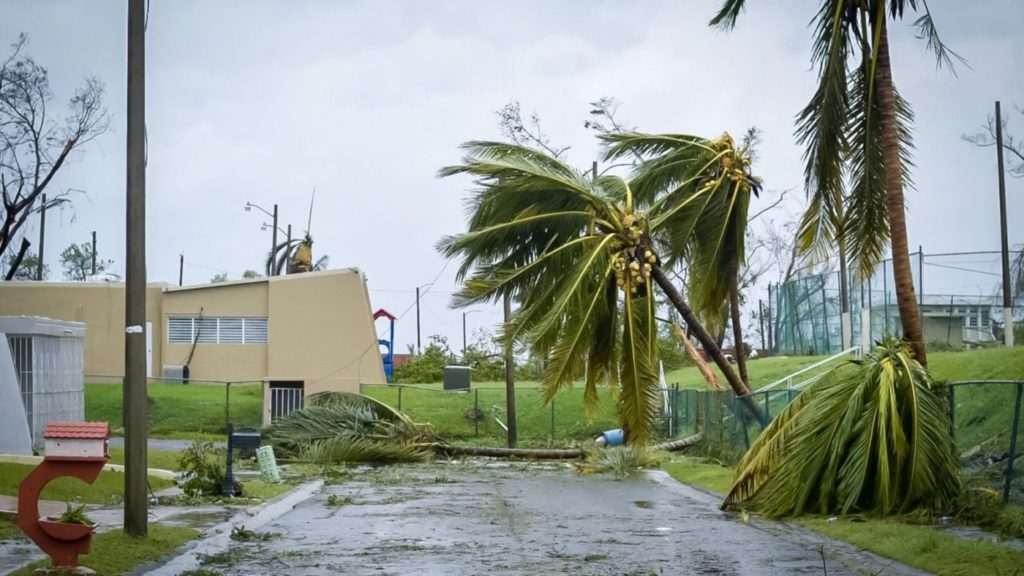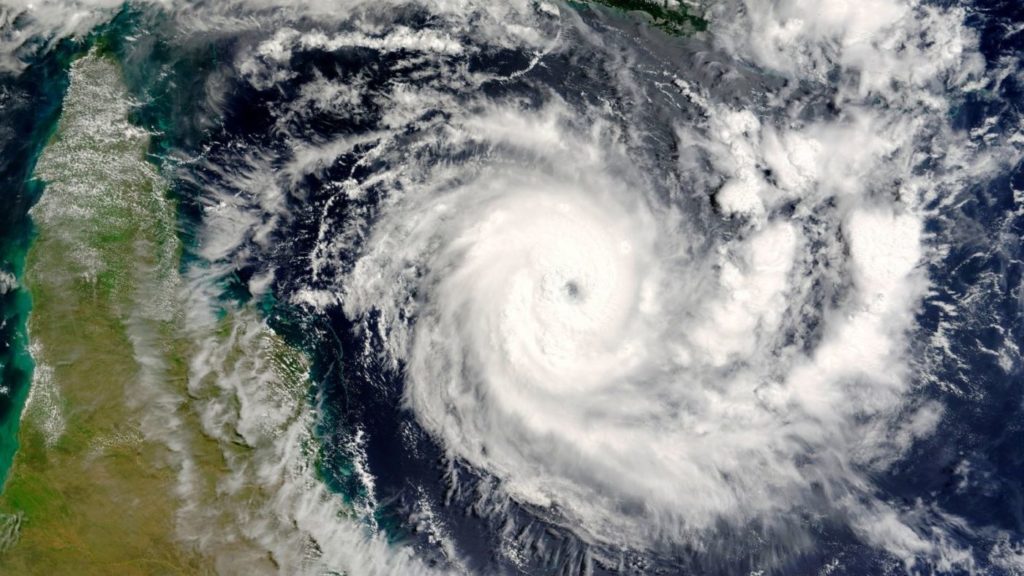Written By: Brad Campbell | March 22, 2021
If you live in a hurricane-prone zone, you probably know that hurricanes are categorized (given a rating from 1-5) based on their severity. But…do you know what each category really means?
Understanding the different ratings can give you a better idea of the way different hurricane categories damage property and help you prepare better, especially when it comes to securing your windows and doors before an approaching storm.
The Saffir-Simpson Hurricane Wind Scale Explained
The Saffir-Simpson Hurricane Wind Scale is the official name of the scale that assigns hurricanes a rating of 1-5 to categorize them by severity. Each hurricane is rated based on its maximum sustained wind speed, with level 1 being the lowest speed and level 5 being the highest.
One of the main purposes this scale serves is to help estimate potential property damage. However, it’s important to note that this hurricane categories damage scale does not take into account other potentially damaging factories like rainfall flooding, storm surge, and tornadoes.

Any hurricane categorized as a 3 or above on the Saffir-Simpson Hurricane Wind Scale is considered a major hurricane, meaning that they have the potential to cause devastating or catastrophic wind damage and major loss of life.
That being said, hurricanes of all levels can cause serious property damage, especially if accompanied by storm surge and flooding. That’s why it’s of the utmost importance to take appropriate measures to fortify your property against hurricanes.

These winds can cause some damage to buildings, including tearing off roof shingles, siding, and gutters. Additionally, tree branches can break off of trees. Falling branches and other storm debris can further damage properties or cause injury to people.
Category 1 hurricanes also have the potential to snap or otherwise damage power lines, leading to short-term power outages.
During a category 2 hurricane, buildings are likely to sustain major roof and siding damage. There is also a bigger risk of additional damage and injury caused by flying storm debris.
Shallow-rooted trees can be uprooted, blocking roads and taking down power lines. There is a big risk of total power loss that can last for days in hard-hit areas.
A category 3 hurricane is a major hurricane that will cause major damage to commercial buildings. The strong winds can potentially tear roof decking and gable ends off well-built structures, for example.
Many trees will be uprooted and electricity and water will be unavailable for days or even weeks after the storm (for reference, Hurricane Katrina was a category 3 hurricane when it made landfall in Louisiana in 2003).
Catastrophic damage from a category 4 hurricane means that buildings will sustain extreme structural damage, potentially losing most of the roof structure and parts of exterior walls.
There is a very high risk of injury and further storm damage due to falling and flying storm debris and most trees and power poles will be downed. Power outages and water shortages can make areas uninhabitable for weeks or months.
Hurricanes in the highest hurricane category cause near total destruction. A large number of buildings will be completely destroyed. Areas hit by this level of hurricane will lack power and water and be uninhabitable for weeks or months.
Only three category 5 hurricanes have made landfall in the U.S. since 1924, the most recent being Hurricane Andrew, which devastated South Florida in 1992.
Most hurricanes that hit the continental U.S. are categories 1 or 2 by the time they make landfall, and are often classified as tropical storms rather than major hurricanes.
However, you can see from the hurricane categories damage scale above that there is still potential for devastating property damage. The risk increases if a storm is accompanied by high levels of storm surge and rainwater flooding.
So, if you live in an at-risk area for hurricanes and tropical storms, such as Miami-Dade county or any coastal region of the southeastern United States, what can you do to mitigate the risk of storm damage to your property?
No matter what type of building you have, its most vulnerable points are its windows (or glass doors).
A flying tree branch or another piece of storm debris hurled by hurricane-force winds can smash through a pane of standard window glass incredibly easily.
Not only does this mean you have to replace a broken window, but it leaves your property open to rain and wind, which can cause much more internal damage. Besides that, the shards of broken glass can fly dangerously inwards, potentially injuring anyone inside.
In order to mitigate these risks, you must secure your windows and doors with some type of physical barrier.
We’ve already discussed the advantages and disadvantages of different storm damage barriers in other posts.
So, we’ll just reiterate that, from our experience as glass security experts, the highest level of protection you can provide your windows and doors are polycarbonate glazing shields.
These glass-like panels are stronger and lighter than any type of security glass and are virtually unbreakable, so you don’t have to worry about storm debris smashing through your windows and leaving your property exposed.
Contact us today for more information about our security glazing products and storm damage mitigation solutions.

HOW CAN WE HELP YOU?
